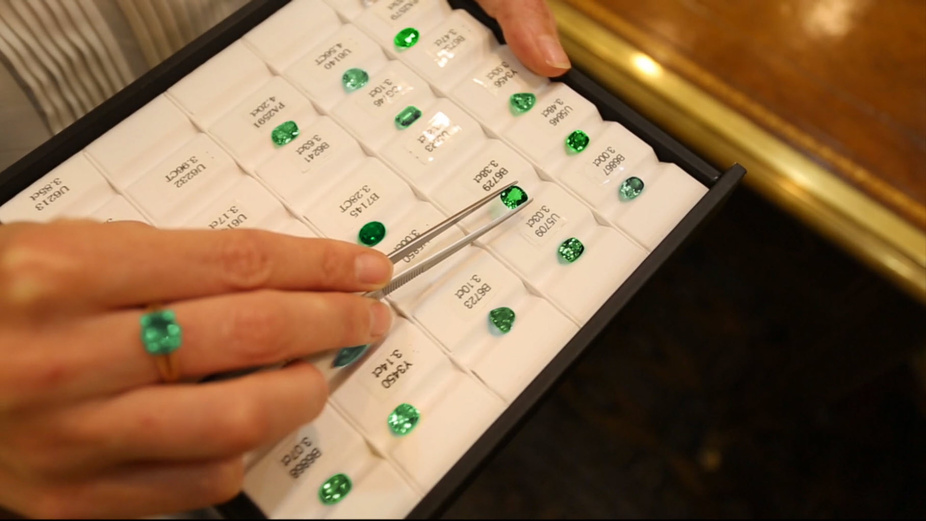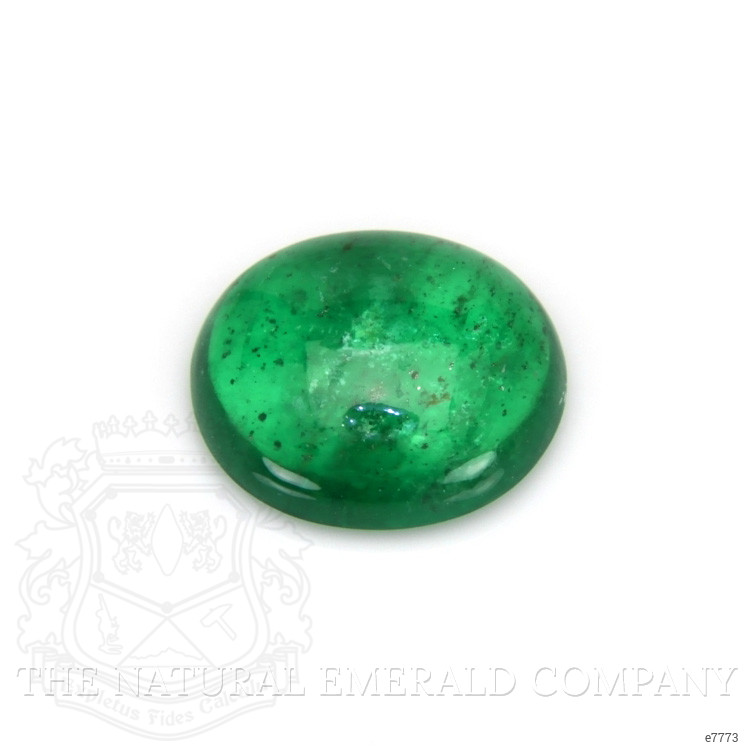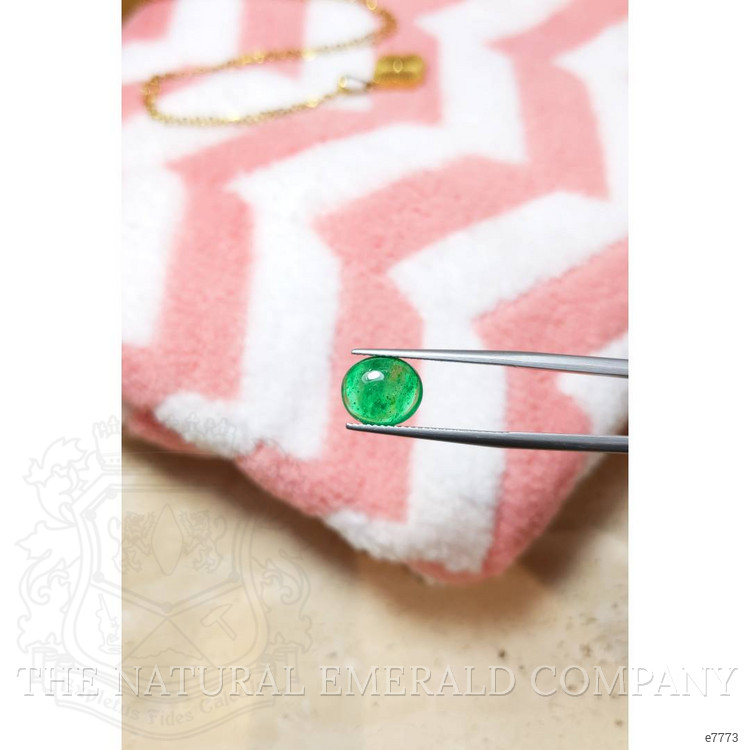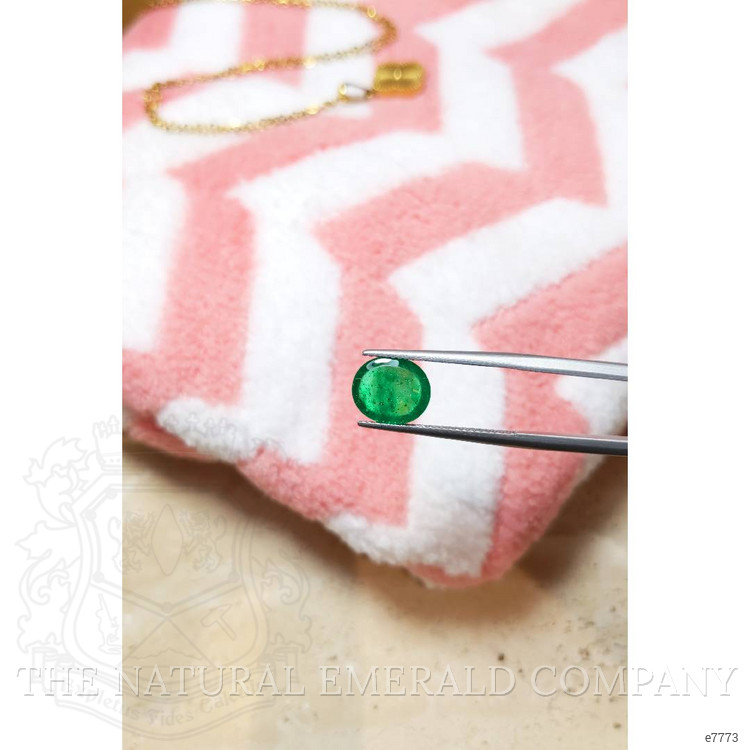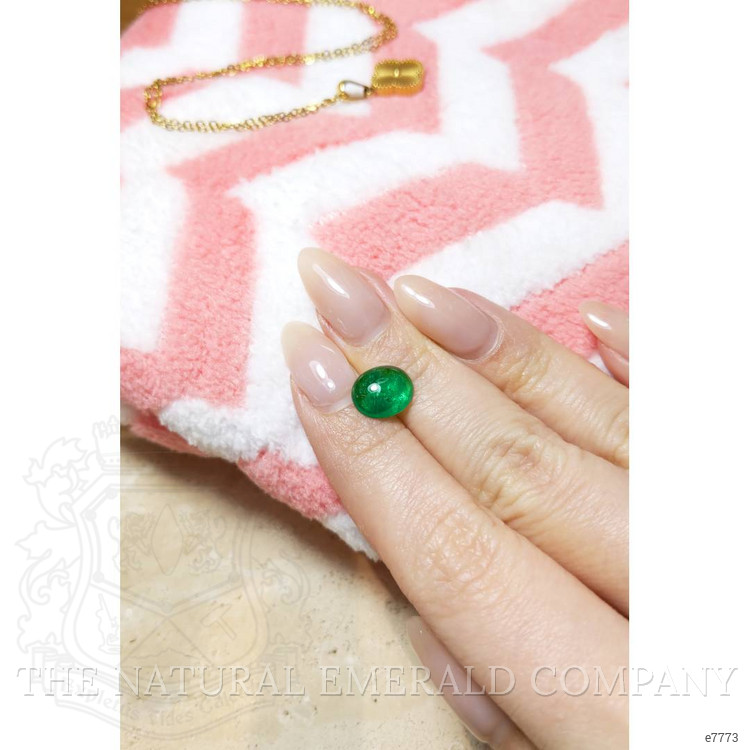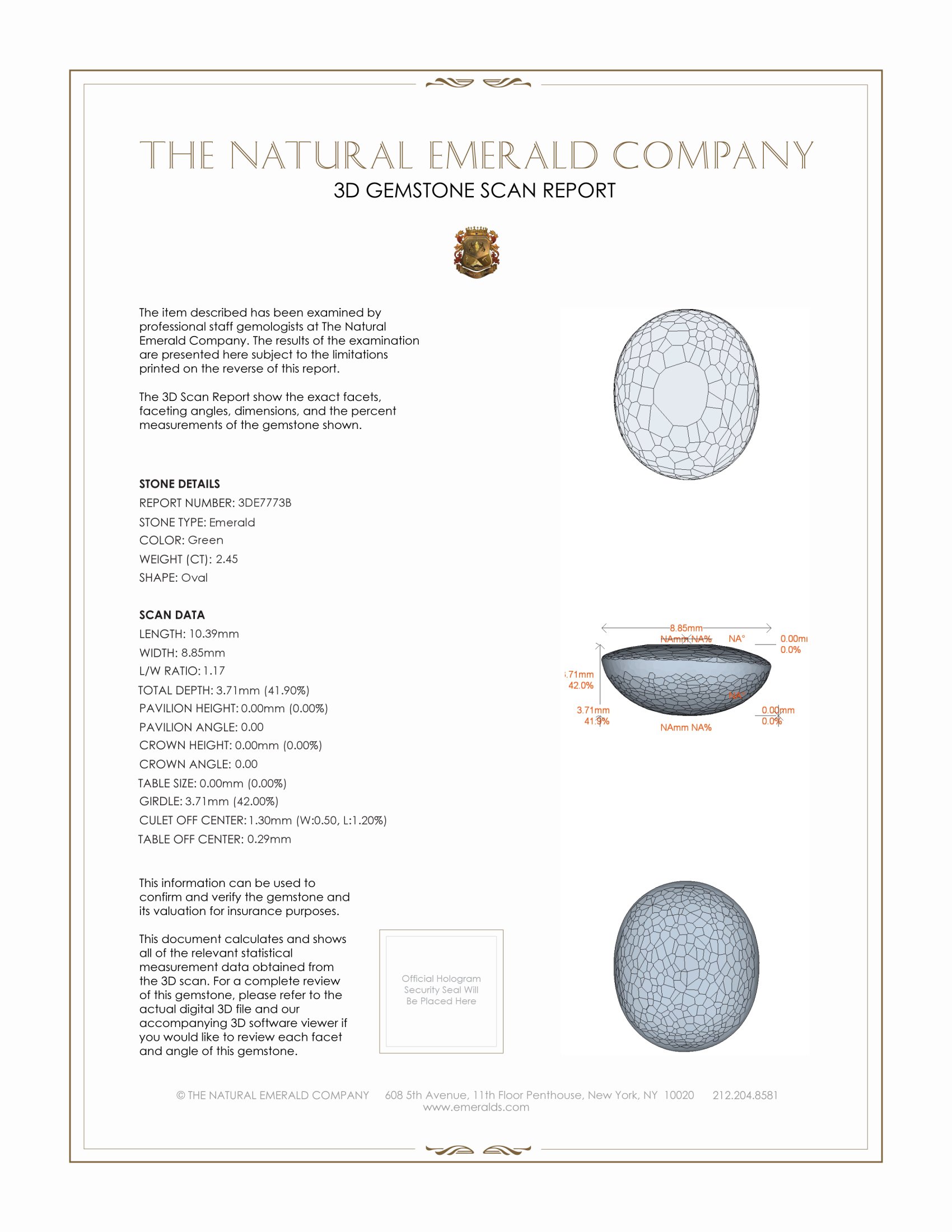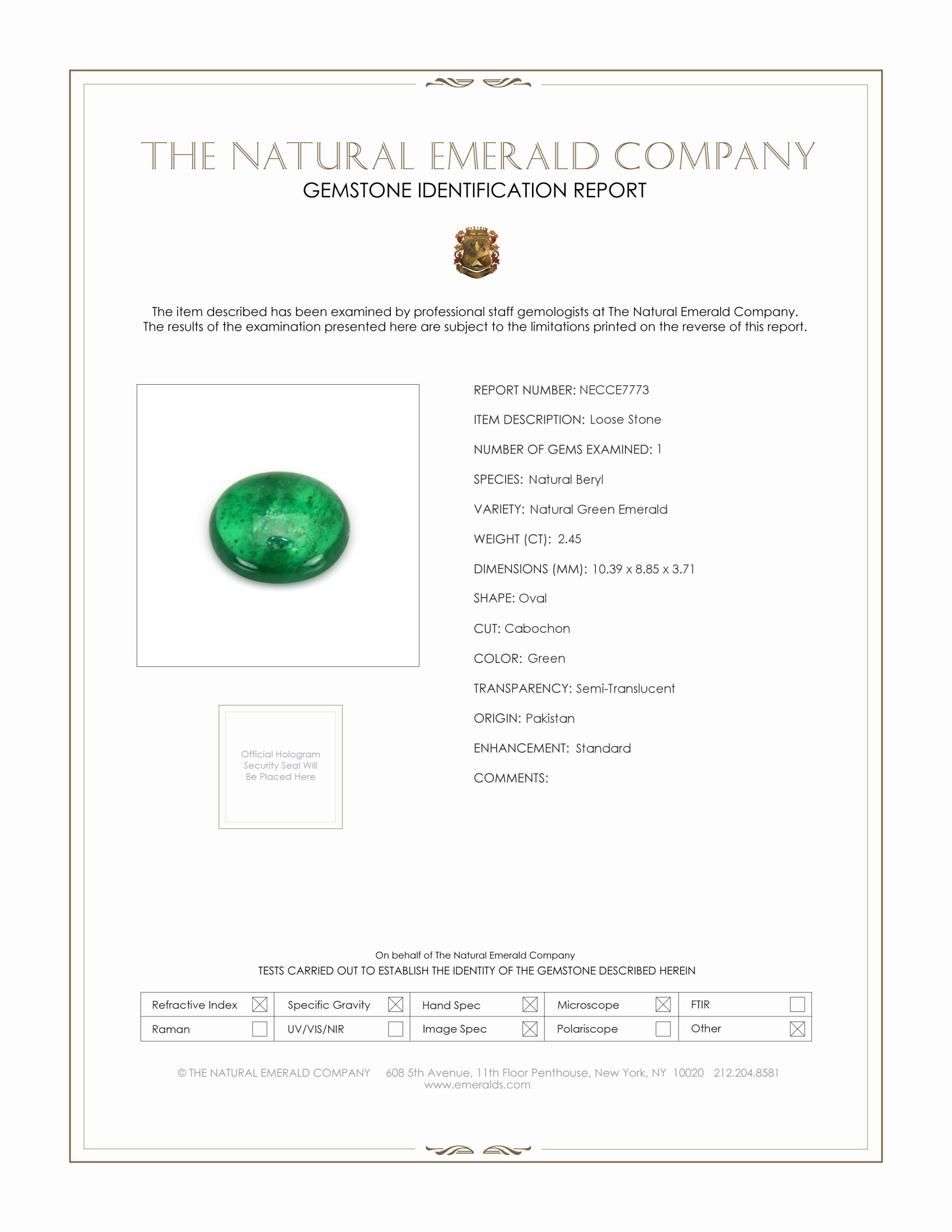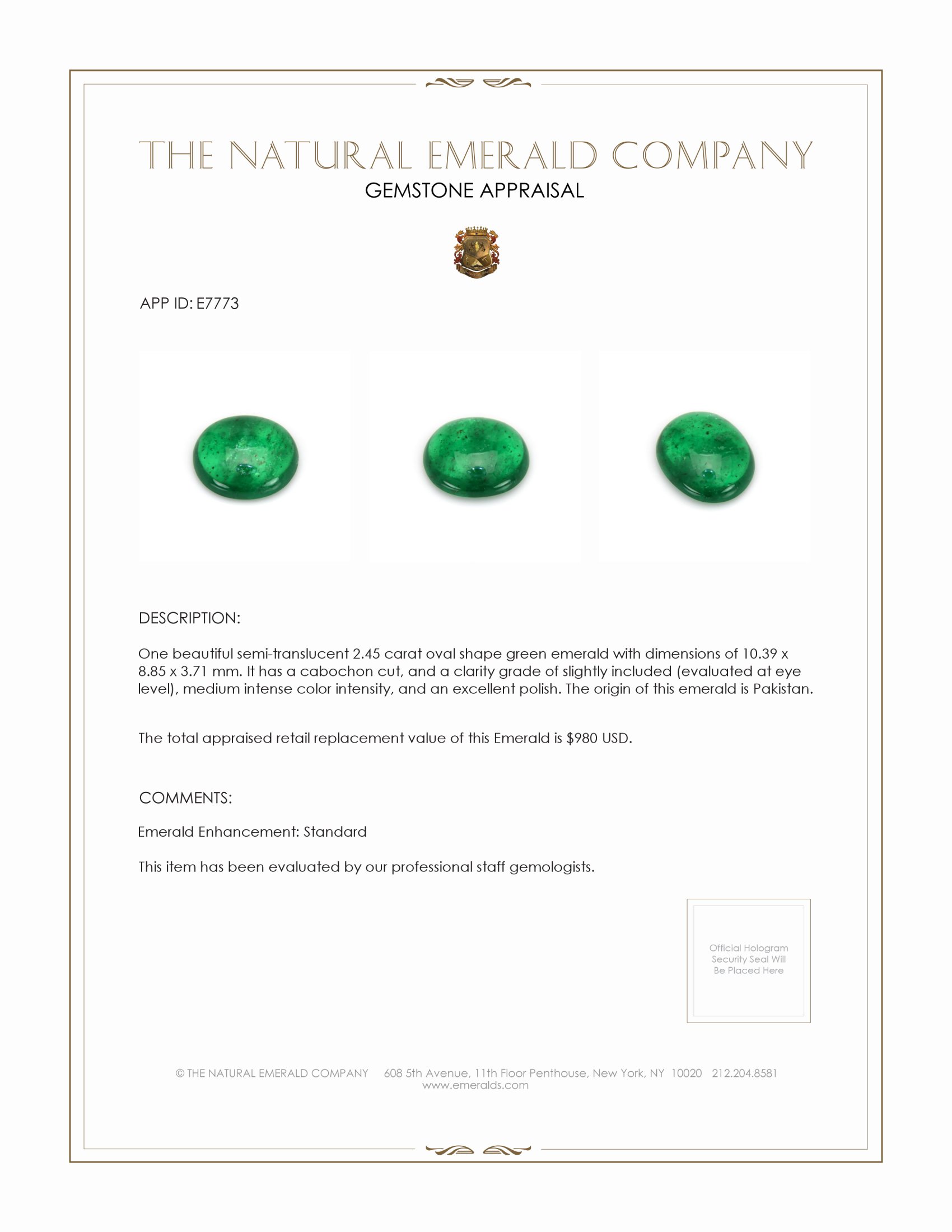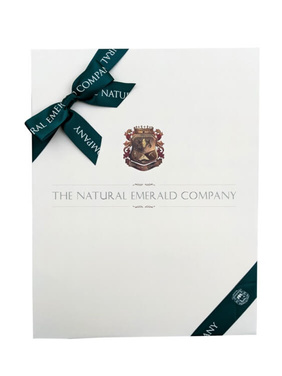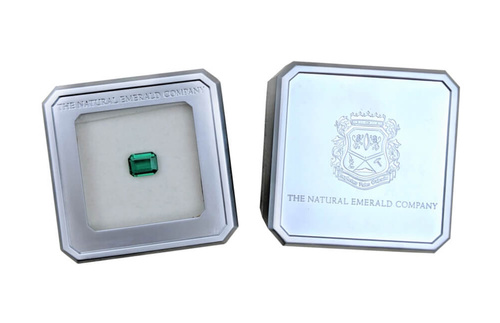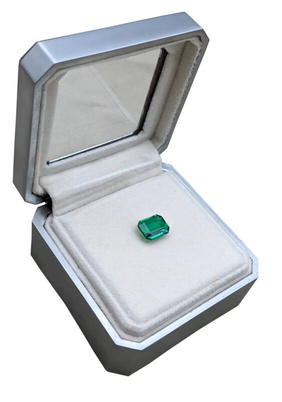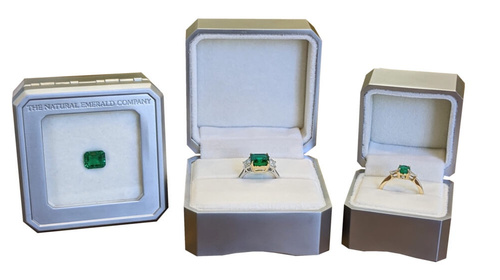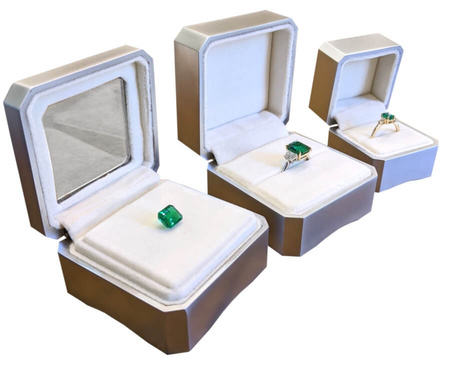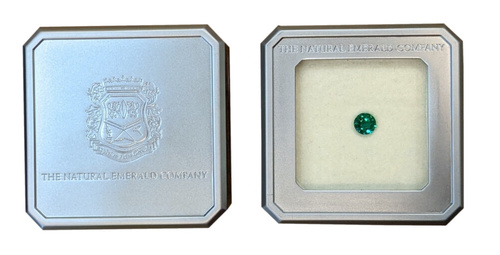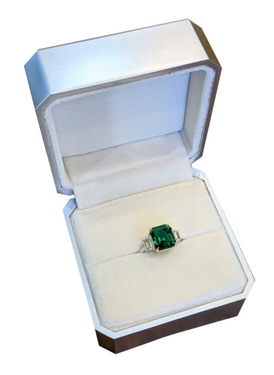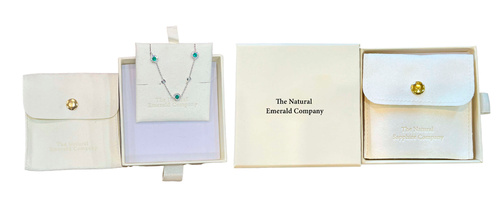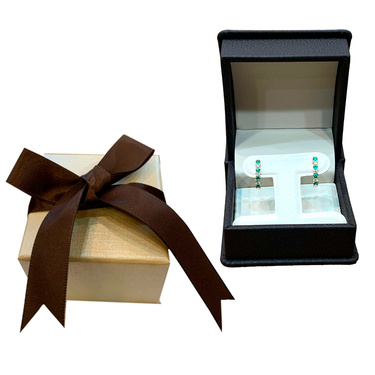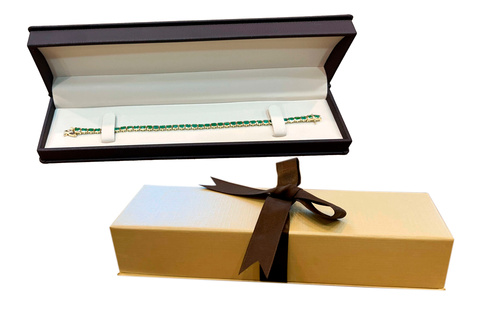- Stone14
- Reports3










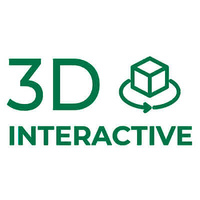



2.45 Ct. Cabochon Emerald from Pakistan
This loose stone ships by Nov 7
Item ID: | E7773 |
|---|---|
Dimensions (MM): help | Length: 10.39 Width: 8.85 Height: 3.71 |
Weight: | 2.45 Ct. |
Color: help | Green |
Color intensity: help | Medium Intense |
Clarity: help | Slightly Included |
Shape: help | Oval |
Cut: | Cabochon |
Cutting style: | Cabochon |
Enhancements: help | Standard |
Origin: help | Pakistan |
Per carat price: help | $400 |
This 2.45 carat oval emerald from Pakistan presents as a semi translucent cabochon with dimensions of 10.39 x 8.85 x 3.71 mm, and it embodies both geological history and careful lapidary work. Chemically a variety of beryl with the formula Be3Al2Si6O18, this emerald owes its verdant hue to trace chromium and vanadium introduced during formation. The medium intense color intensity is evenly distributed through the dome of the cabochon, with subtle internal color zoning that is typical of emeralds formed in metamorphic terranes. At eye level the clarity is graded slightly included, and the internal features form the classic emerald jardin, a network of mineral and fluid inclusions that documents the growth environment. Enhancement is standard, applied to improve apparent clarity and stability in a manner consistent with trade practice. The Natural Emerald Company presents this gem as an example of balanced gemological attributes, where natural formation and customary enhancement combine to produce a wearable, characterful stone.
From a geological perspective this emerald has a narrative that spans millions of years, beginning deep within convergent orogenic belts where beryllium bearing fluids were mobilized during metamorphism. In the Pakistan deposits these processes occurred as regional metamorphism and localized hydrothermal activity introduced beryllium rich fluids into fractures and shear zones within aluminum rich host rocks. Chromium and vanadium sourced from adjacent ultramafic or mafic lenses diffused into the growing beryl lattice, substituting into the crystal structure and producing the green body color. Slow cooling and episodic fluid flow allowed for the growth of coherent crystals with internal fluid inclusions and mineral inclusions, preserving the record of pressure temperature conditions. Over geological time the host rock was uplifted and exhumed, and weathering liberated gem quality beryl for eventual recovery, grading, and cutting.
The cabochon cut chosen for this oval emerald is a deliberate technical decision driven by the stone's semi translucent nature and its internal characteristics. A cabochon preserves maximum material weight, enhances apparent color saturation by providing consistent light transmission through the dome, and visually integrates internal jardin to produce a soft, living depth to the green. The cutter shaped the oval outline to 10.39 x 8.85 mm, and established a dome height of 3.71 mm to balance color concentration with surface area. Achieving an excellent polish on a domed surface requires progressive lapidary stages, controlled pressure, and careful choice of abrasives to prevent surface chipping or microscratches. The result is a high gloss surface that refracts and transmits light in a manner that accentuates the medium intense saturation while minimizing luster loss from surface imperfections.
For the connoisseur who values technical craftsmanship and provenance, this stone offers both mineralogical interest and practical considerations for setting. The slightly included clarity and standard enhancement mean that protective settings such as a bezel or partial bezel are recommended to shield the girdle and to showcase the cabochon silhouette. The oval proportions are well suited to centering in rings and pendants where the dome will animate under incident light, revealing the internal jardin and color nuances. The Natural Emerald Company certifies the origin as Pakistan, and our description emphasizes measured attributes such as carat weight, dimensions, cut style, clarity grade, color intensity, and polish quality, so that informed buyers can assess the gem on both scientific and aesthetic terms.

